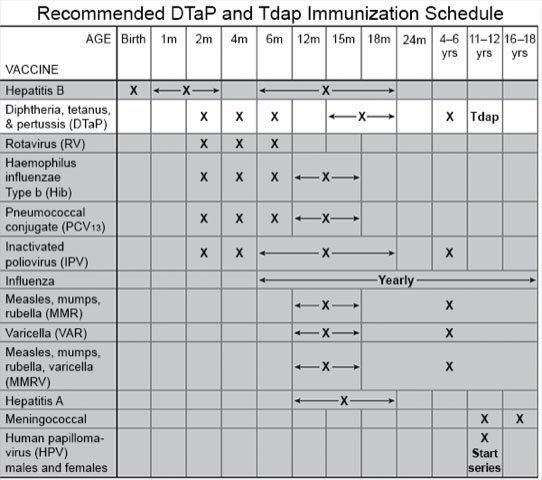Tetanus in Children
Medically reviewed by Drugs.com. Last updated on Aug 4, 2025.
Tetanus is a disease caused by a bacterial infection. The bacteria are usually found in soil, dust, and the bowel movements of some animals and humans. The bacteria may enter your child's body through a skin wound. A mother can also pass the bacteria to her baby during a vaginal birth. The bacteria produce a toxin that damages nerves. This causes severe muscle spasms.
DISCHARGE INSTRUCTIONS:
Call your local emergency number (911 in the US) if:
- Your child has trouble breathing or swallowing.
Call your child's pediatrician if:
- Your child's heartbeat is very fast or not regular.
- Your child has muscle spasms in his or her face.
- Your child starts to feel muscle cramps or spasms near a wound.
- Your child has a wound that is large or cannot be cleaned.
- Your child has an open wound or a puncture wound.
- You do not know if your child's tetanus vaccines are current.
- You have questions or concerns about your child's condition or care.
Medicines:
Your child may need any of the following:
- Medicines may be given to stop or prevent seizures and muscle spasms. Your child may also need prescription pain medicine. Ask your child's healthcare provider how to give this medicine safely.
- Do not give aspirin to children younger than 18 years. Your child could develop Reye syndrome if he or she has the flu or a fever and takes aspirin. Reye syndrome can cause life-threatening brain and liver damage. Check your child's medicine labels for aspirin or salicylates.
- Give your child's medicine as directed. Contact your child's healthcare provider if you think the medicine is not working as expected. Tell the provider if your child is allergic to any medicine. Keep a current list of the medicines, vitamins, and herbs your child takes. Include the amounts, and when, how, and why they are taken. Bring the list or the medicines in their containers to follow-up visits. Carry your child's medicine list with you in case of an emergency.
Treatment options
The following list of medications are related to or used in the treatment of this condition.
Prevent tetanus:
- Clean every wound immediately. Apply pressure to your child's wound to stop any bleeding. Clean the wound with soap and water. Remove dirt or other objects from the wound. Change the bandage every day and if it gets wet or dirty.
- Clean your baby's cord stump as directed. Always wash your hands before you care for your baby's cord stump. Gently wash the stump and the skin around it with mild soap and warm water during every bath. Gently pat the stump dry after your baby's bath. If the stump gets dirty from urine or bowel movement, wash it off right away. Your baby's healthcare provider may suggest you use rubbing alcohol or water and a cotton swab to clean the stump. Gently wipe from the base to the top of the stump. Clean the stump with each diaper change.
- Talk to your child's healthcare provider about vaccines. A tetanus infection will not make your child immune from another infection. The DTaP, Tdap, and Td vaccines help protect against tetanus. The vaccines are given to children in several doses. Your child's provider can help you create a schedule so you know when to bring your child in. If your adolescent is pregnant, she should receive 1 dose of Tdap during weeks 27 to 36.

Follow up with your child's pediatrician as directed:
Write down your questions so you remember to ask them during your visits.
© Copyright Merative 2025 Information is for End User's use only and may not be sold, redistributed or otherwise used for commercial purposes.
The above information is an educational aid only. It is not intended as medical advice for individual conditions or treatments. Talk to your doctor, nurse or pharmacist before following any medical regimen to see if it is safe and effective for you.
Learn more about Tetanus
Treatment options
Care guides
Symptoms and treatments
Further information
Always consult your healthcare provider to ensure the information displayed on this page applies to your personal circumstances.
